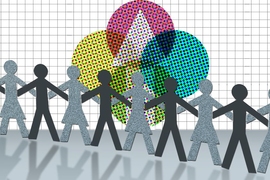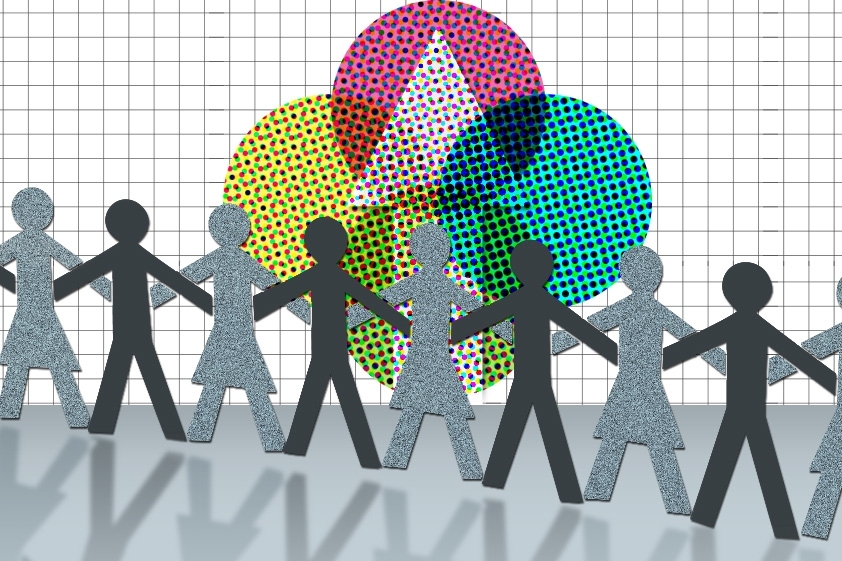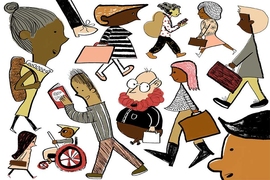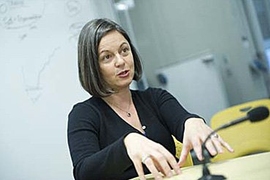Gender diversity in the workplace helps firms be more productive, according to a new study co-authored by an MIT researcher — but it may also reduce satisfaction among employees.
“Having a more diverse set of employees means you have a more diverse set of skills,” says Sara Ellison, an MIT economist, which “could result in an office that functions better.”
At the same time, individual employees may prefer less diverse settings. The study, analyzing a large white-collar U.S. firm, examined how much “social capital” offices build up in the form of things like cooperation, trust, and enjoyment of the workplace.
“The more homogeneous offices have higher levels of social capital,” Ellison observes. “But the interesting twist is that … higher levels of social capital are not important enough to cause those offices to perform better. The employees might be happier, they might be more comfortable, and these might be cooperative places, but they seem to perform less well.”
More diversity, more revenue?
The paper summarizing the study’s results, “Diversity, Social Goods Provision, and Performance in the Firm,” was recently published in the Journal of Economics and Management Strategy. The authors are Ellison, a senior lecturer in MIT’s Department of Economics, and Wallace P. Mullin, an economist at George Washington University.
The study used eight years of revenue data and survey results, covering 1995 to 2002, from a professional-services firm with more than 60 offices in the United States and abroad. The data included some all-male and all-female offices — both of which are unusual, the researchers note — in addition to mixed-gender offices. The survey data allowed Ellison and Mullin to study the employees’ ratings of office satisfaction, cooperation, and morale, not just one generalized measure of workplace happiness.
Among other results, the economists found that shifting from an all-male or all-female office to one split evenly along gender lines could increase revenue by roughly 41 percent. To see how this could happen, Ellison suggests an analogy with a baseball team.
“A baseball team entirely composed of catchers could have high esprit de corps,” Ellison says, noting that a band of catchers could share experiences, equipment, or tips for handling knuckleballs. “But it would not perform very well on the field.”
Similarly, greater social diversity implies a greater spread of experience, which could add to the collective knowledge of a group of office workers and make the unit perform more effectively.
Another wrinkle Ellison and Mullin found is that just the perception that firms are diverse was sufficient to produce satisfaction among employees — but this perception did not necessarily occur in the places where more extensive gender diversity accompanied better bottom-line results.
“In offices where people thought the firm was accepting of diversity, they were happier and more cooperative,” Ellison says. “But that didn’t translate into any effect on office performance. People may like the idea of a diverse workplace more than they like actual diversity in the workplace.”
Ellison acknowledges that in focusing on a single firm that was willing to provide data, the study was necessarily limited in scope, and says she would welcome further research. Management studies on social capital, she says, do not necessarily link the matter to objective financial results; economics studies of social capital have generally focused on issues such as public finance or even soldier behavior, and not job issues.
“There have been a number of studies looking at things like diversity and performance, but they don’t always use the [bottom-line] measures of performance that economists might prefer,” Ellison says. At the same time, she adds, “Highlighting the workplace setting, as a place for economists to study social capital, is also useful.”
The work was funded in part by the National Science Foundation.












